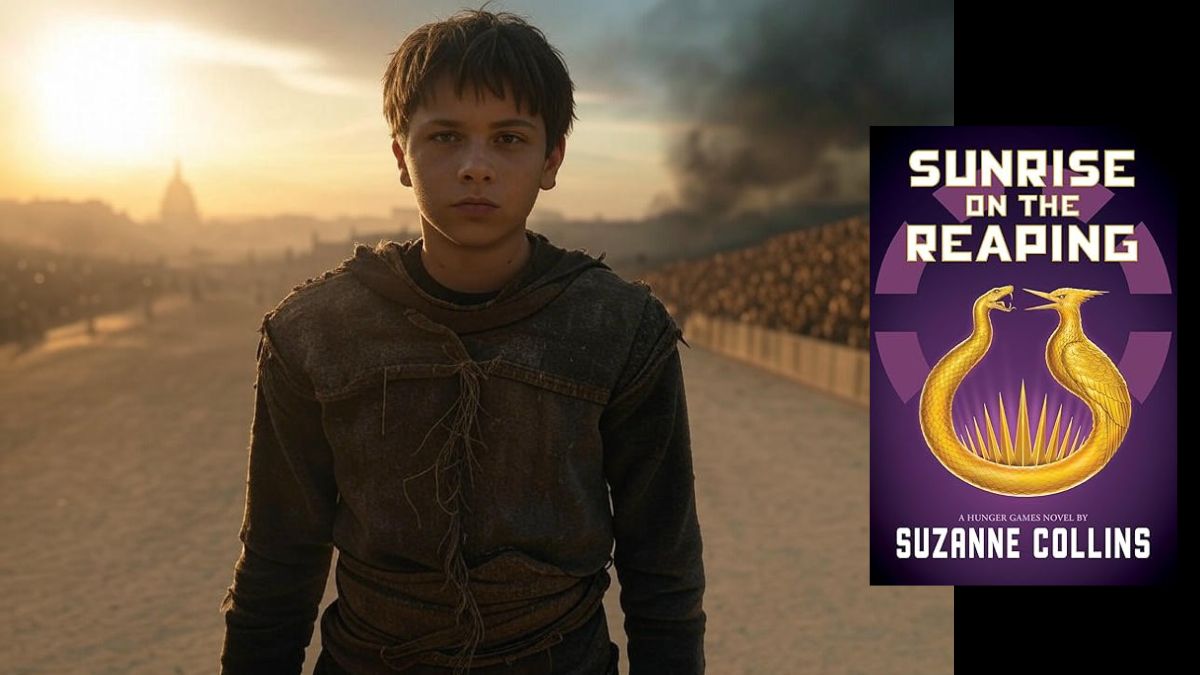The rebellion wasn’t the end—what if it was just the beginning?
More than a decade after Mockingjay, Suzanne Collins returns with Sunrise on the Reaping, and once again, she proves that the world of Panem still has stories worth telling. This time, we go back in time—24 years before Katniss Everdeen’s rise—into the heart of the 50th Hunger Games, known infamously as the Second Quarter Quell. It’s a deeply political, chilling, and emotionally rich exploration of power, trauma, and survival.
Summary & Key Takeaways
This prequel centers around Haymitch Abernathy, long before he became Katniss’s surly mentor. At just 16, Haymitch is reaped for a Hunger Games that’s been intentionally twisted by the Capitol—a brutal showcase meant to crush hope and remind the Districts of their place. This year, the Capitol doubles the number of tributes. Haymitch, clever and unexpectedly defiant, is thrust into a violent and emotionally scarring battle not only for his life, but for his dignity.
Collins dives into:
- Haymitch’s origin story: Not just how he survived, but how he became the jaded mentor we meet in The Hunger Games.
- The evolving politics of Panem: The Quarter Quell exposes cracks in the Capitol’s façade and deepens our understanding of the rebellion’s roots.
- Themes of manipulation and spectacle: The Games are deadlier, crueler, and even more theatrically twisted than before.
As always, Collins doesn’t romanticize violence. Instead, she dissects it—layer by layer—showing its lasting psychological effects on survivors.
Why It’s Worth Reading
What sets Sunrise on the Reaping apart is its psychological depth and political weight. This is not a book about winning a game—it’s about what it costs to play it. Haymitch isn’t a typical hero; he’s complex, clever, sarcastic, and painfully aware of the price of rebellion. Readers will come to understand why he drinks, why he keeps people at arm’s length, and why he’s so fiercely protective of Katniss years later.
Suzanne Collins also critiques the cycle of violence, exploring how the Capitol manufactures enemies and spectacle while pretending to keep peace. It’s eerily relevant and deeply unsettling—yet impossible to look away from.
Who Should Read This Book?
- Fans of The Hunger Games trilogy craving more backstory and political intrigue.
- Readers who enjoy character-driven dystopian fiction with a dark psychological edge.
- Newcomers who want to explore Panem’s history in a standalone experience (though prior Hunger Games knowledge enhances it).
FAQs about Sunrise on the Reaping
Q1: Do I need to read the original trilogy to enjoy this?
Not necessarily, but it adds depth to understanding Haymitch’s arc and the significance of certain plot points.
Q2: Is this book more violent than previous Hunger Games books?
The violence is intense but consistent with the tone of the series—it’s more emotionally scarring than gory.
Q3: Is Katniss in the book?
No. This takes place two decades before she was born. However, her story is deeply connected through Haymitch’s experiences.
Q4: Does the book explore the Capitol’s perspective?
Somewhat. We get glimpses through propaganda and manipulation, but the story is primarily told through Haymitch’s lens.
Q5: Will there be more prequels after this?
There’s no confirmation yet, but Collins leaves the door open for further exploration of Panem’s history.
Books Details
- Publisher : Scholastic Press (March 18, 2025)
- Language : English
- Hardcover : 400 pages
- ISBN-10 : 1546171460
- ISBN-13 : 978-1546171461
- Reading age : 12 years and up
- Grade level : 7 – 9
- Item Weight : 1.74 pounds
- Dimensions : 6 x 1.25 x 8.5 inches
- Best Sellers Rank: #2 in Books

